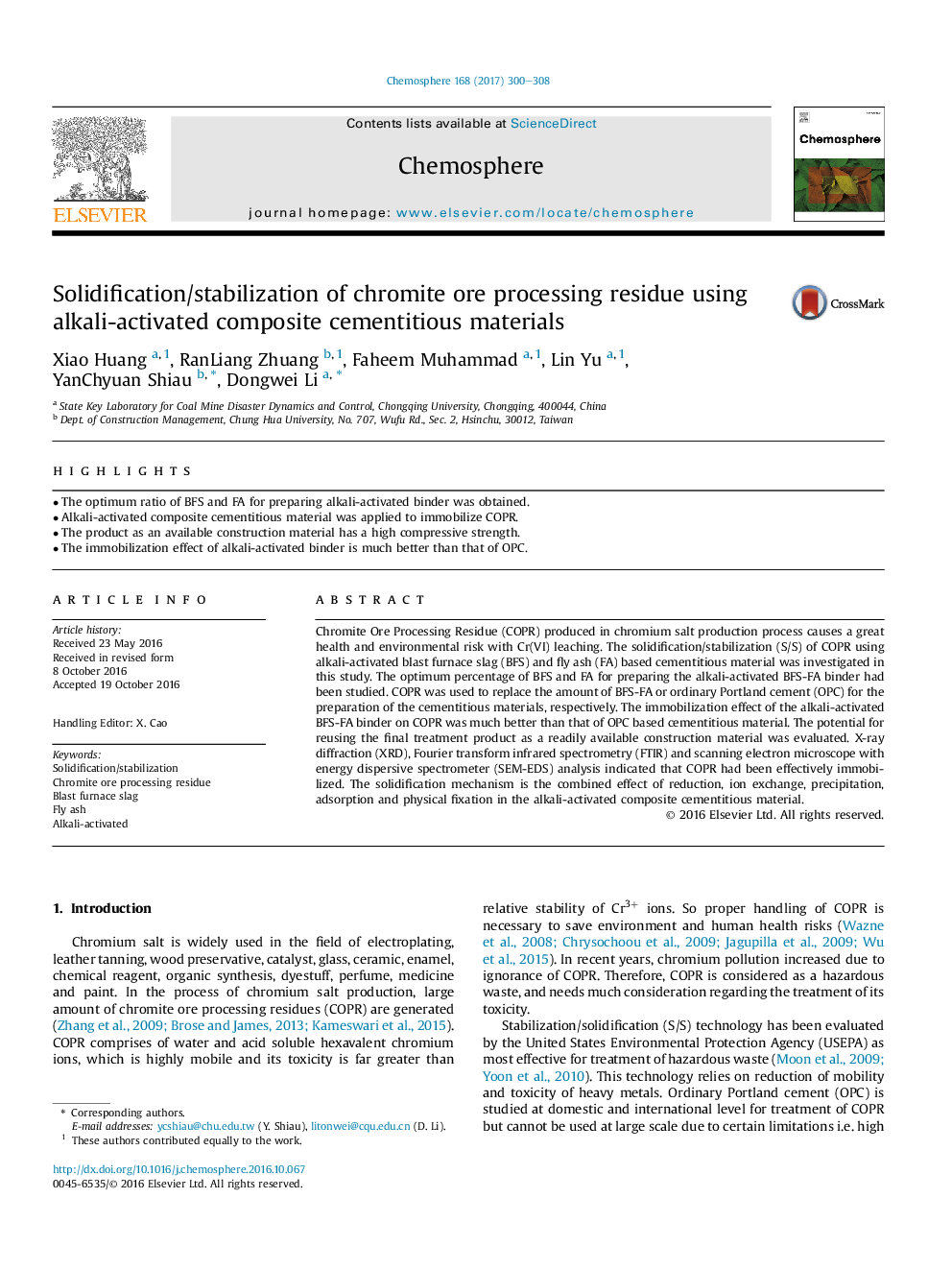| Article ID | Journal | Published Year | Pages | File Type |
|---|---|---|---|---|
| 5746594 | Chemosphere | 2017 | 9 Pages |
Abstract
Chromite Ore Processing Residue (COPR) produced in chromium salt production process causes a great health and environmental risk with Cr(VI) leaching. The solidification/stabilization (S/S) of COPR using alkali-activated blast furnace slag (BFS) and fly ash (FA) based cementitious material was investigated in this study. The optimum percentage of BFS and FA for preparing the alkali-activated BFS-FA binder had been studied. COPR was used to replace the amount of BFS-FA or ordinary Portland cement (OPC) for the preparation of the cementitious materials, respectively. The immobilization effect of the alkali-activated BFS-FA binder on COPR was much better than that of OPC based cementitious material. The potential for reusing the final treatment product as a readily available construction material was evaluated. X-ray diffraction (XRD), Fourier transform infrared spectrometry (FTIR) and scanning electron microscope with energy dispersive spectrometer (SEM-EDS) analysis indicated that COPR had been effectively immobilized. The solidification mechanism is the combined effect of reduction, ion exchange, precipitation, adsorption and physical fixation in the alkali-activated composite cementitious material.
Keywords
Related Topics
Life Sciences
Environmental Science
Environmental Chemistry
Authors
Xiao Huang, RanLiang Zhuang, Faheem Muhammad, Lin Yu, YanChyuan Shiau, Dongwei Li,
